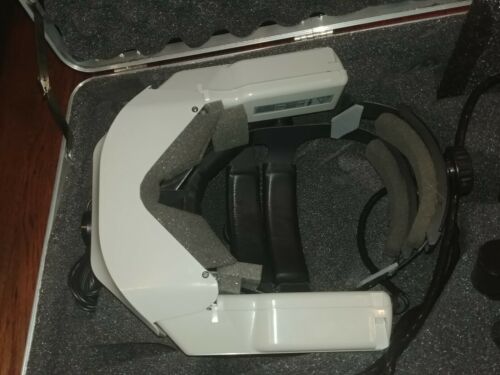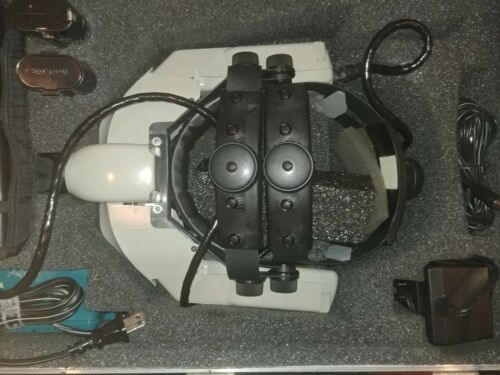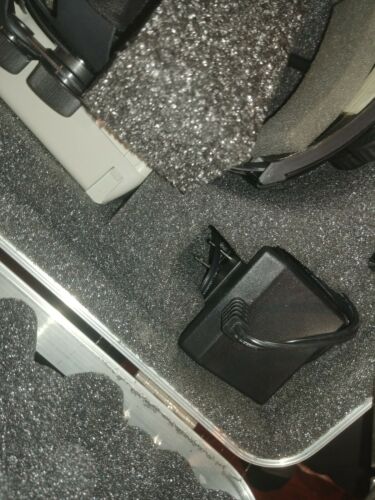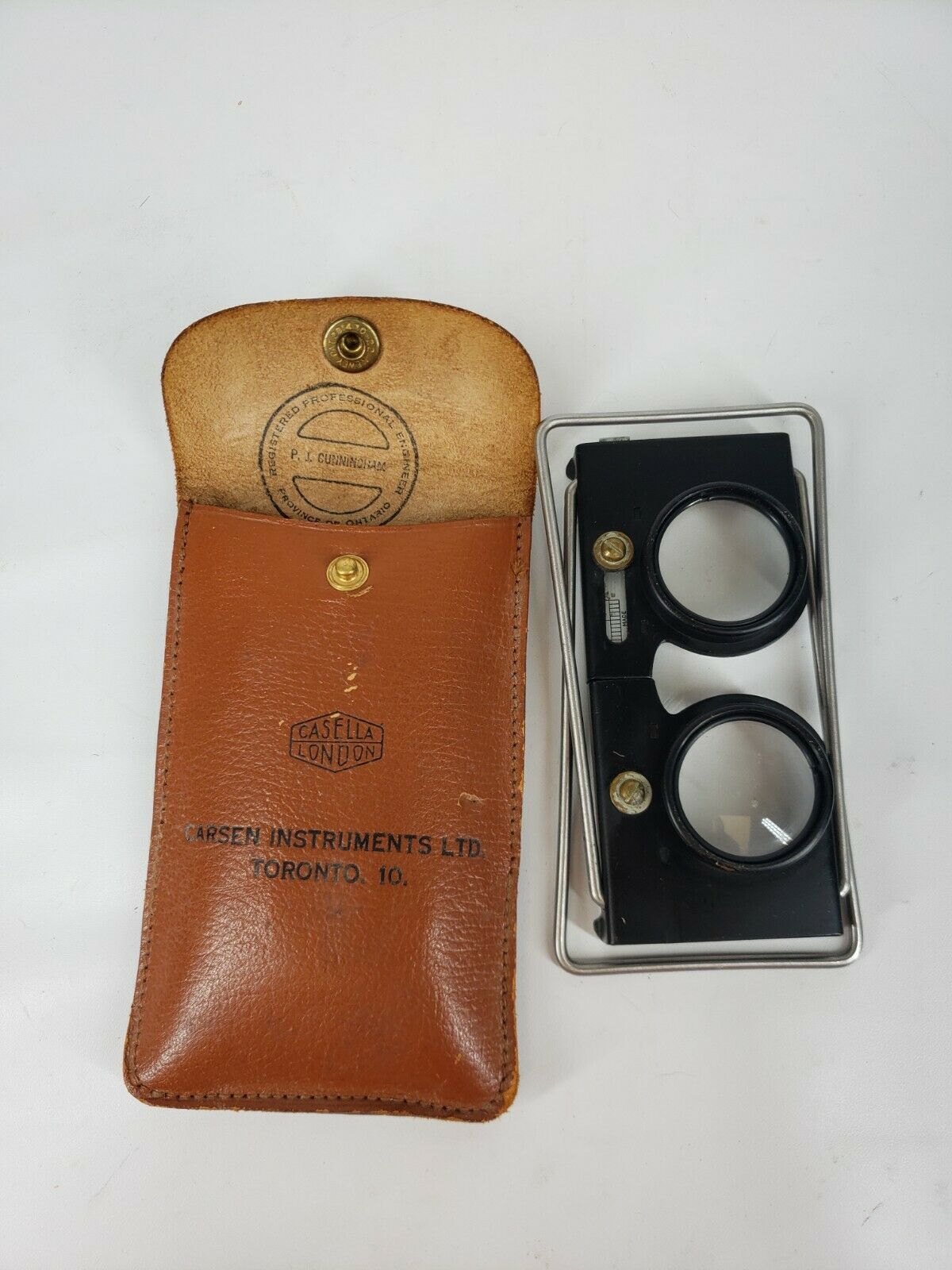-40%
Visionics NASA Low Vision Enhancement System LVES Optical CCTV Medical 1990s
$ 211.19
- Description
- Size Guide
Description
Offered is a Visionics LVES Low Vision Enhancement System Vintage Optical CCTV Device.This comes with headset, control module, case, power transformer, video cable, wipe, 2 working batteries and charger.
This is a first generation and original Low Vision Enhancement system dating from the 1990s. This is so retro and it actually turns on and appears to work although I wouldn't suggest driving with it. These devices were developed in partnership with NASA & the Wilmert Eye Institute and I have included details from Visionics website below.
I charged both batteries and the devise worked with both as well as the power converter. This this is very comfortable and looks futuristic even though it was from the past.
The CCTV and camera appear to work and the controls also seem to change the images. Everything comes nested in a custom fitted hard fiberglass case with the keys and lens cloths. This unit sold for 00 in 1994 and fewer than 100 of this model were made. This is a rare gem in terrific working condition with everything included. It is clean and ready to add to your medical device collection.
Following is detailed information from the Visionics Website.
The LVES development began in 1985, when Wilmer Eye Institute's Dr. Massof met with NASA officials to see if there was an emerging aerospace technology that might be adapted to low vision enhancement. Stennis Space Center and Wilmer then began development of a laboratory-based prototype system of real-time image processing. In 1992, the prototype LVES was unveiled and publicly demonstrated. Eleven centers of the Department of Veteran Affairs provided the patient population and conducted clinical trials of the system, on the basis of which final design modifications were incorporated into the headset. Visionics Corporation was founded in July 1992 to manufacture and market LVES and future improvements to the technology developed by Johns Hopkins.
LVES was introduced to the commercial marketplace in 1994 after almost a decade of development by a multiorganizational team that included NASA, the Wilmer Eye Institute of The Johns Hopkins Medical Institutions, the Department of Veteran Affairs, and Visionics Corporation, Minneapolis, Minnesota, which manufactures the system under license. The device was invented and patented by a trio of researchers: Dr. Robert W. Massof, director of Wilmer Eye Institute's Lions Vision Center; Dr. Thomas Raasch, also of Wilmer; and Dr. Donald O'Shea of Georgia Tech.
The Wilmer researchers, in cooperation with scientists of NASA's Stennis Space Center, used NASA technology for computer processing of satellite images, along with technology for head-mounted vision enhancement systems originally intended for space station use. The transfer of these technologies made it possible to improve the capabilities of low vision patients by appropriately enhancing and altering images to compensate for the patient's impairment.
The LVES consists of a head-mounted video display worn like goggles, a set of three video cameras, and a control unit that allows the user to select and control the cameras, and to adjust contrast and image polarity to suit the user's needs. The cameras feed the images to a computer that corrects for the particular vision problem of the user, then sends the images to the video display in the goggles.
Visionics sales literature succinctly describes the technology: "The LVES does for video images what headphones do for sound. It presents the enlarged image of a video screen to each eye in a way that creates a sense of being immersed in a video scene." The enlargement is accomplished by a patented system of optical mirrors, designed and manufactured by Polaroid Corporation, Cambridge, Massachusetts, that project the video images onto the wearer's retinas.
LVES is powered by a battery carried in a nylon belt pack along with a control unit that allows the wearer to adjust contrast and magnification. The belt pack, including the battery, weighs 2 1/2 pounds and is about the size of a book. The headset, worn like aviator's goggles, weighs 34 ounces.



















